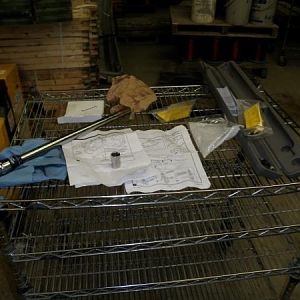A case in point... several years ago, having purchased a Chevy p/u to tow my boat, I decided it "needed" a "better" exhaust system. I read all the magazines, all touting the improved performance to be gained by going with a larger, cat-back system.
I drove to my friendly, neighborhood exhaust shop and ordered up a nice, big 3 1/2", double throw down, triple step over, hot rod exhaust! The proprieter asked "Why"? I told him about all the research I'd done and the results acheived... he responded, "Bulls--t"!
He patiently explained that by installing such a large diameter system, I'd effectively be acheiving the exact opposite of what I was trying for. That the only thing I'd be doing is converting more gasoline into noise, except if my plans were to be towing my boat at 85 to 90 MPH.
"Oh yeah..." I said... "put it on".
Two weeks later, as I was attempting to maintain 30 MPH, with my right foot shoved past the throttle plate, trying to ascend the Cajon Pass in SoCal, being passed by every vehicle (and a few bicycles), I realized I should have listened to someone who knew what they were talking about. This truck just couldn't get out of it's own way!
I sheepishly returned to the exhaust shop, told the old guy he'd been right all along and asked that he "fix" the problem. He cut out a section of the tubing, behind the cat and ahead of the muffler, installed a 2 3/4" pipe and miraculously, the torque returned.










